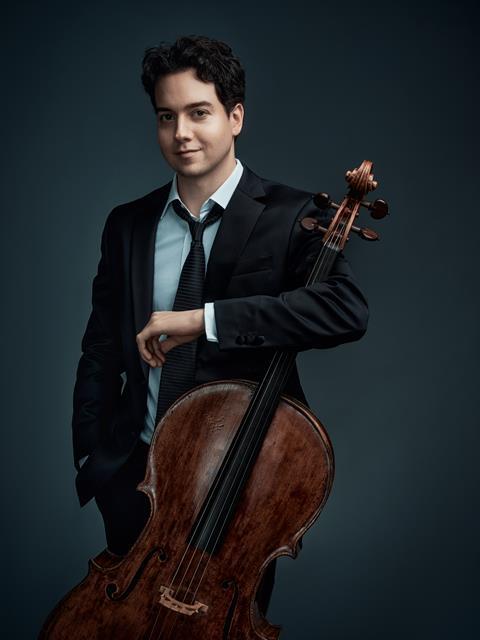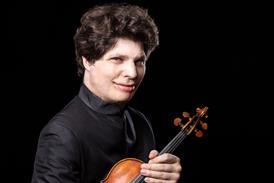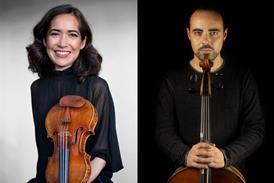Encountering the piece initially at the age of eleven, John-Henry Crawford shares his journey with this staple piece of cello repertoire, as well as tips and advice for overcoming some of the work’s technical challenges

Discover more Featured Stories like this in The Strad Playing Hub
I was just eleven when I first heard Tchaikovsky’s Variations on a Rococo Theme, or as cellists like to say – simply ’Rococo.’ I sat with several friends in a dimly lit auditorium during the dress rehearsal for a ’Home for the Holidays’ concert by my hometown Shreveport Symphony Orchestra in collaboration with local Suzuki students. I had been playing the cello for six years in my mother’s Suzuki programme and had been progressing through the books at a steady pace, but never had I seen nor heard such impressive fireworks on the cello or such beautiful melodies shared between soloist and orchestra. My friends and I were stunned that a cellist could perform such athletic feats with such ease and make the cello sing in such a beautiful way. I didn’t realise it at the time, but this moment was the spark that lit a fire under me to start practising more, explore the cello repertoire more deeply, and ultimately decide to pursue music as my life’s profession.
At the time I was still studying the Suzuki books and not quite ready to learn such a challenging piece, but after a few years learning the concertos of Saint-Saëns and Lalo, I was finally at a point in my technical development where the Rococo Variations were within grasp. Wilhelm Fitzenhagen’s version, who worked closely with Tchaikovsky on the piece and whose version is most regularly performed, is really a perfect progression for young cellists learning the piece for the first time because it gradually gets more difficult with each variation. (Tchaikovsky was not the biggest fan of his changes to the work, but that is a story for another day.) The piece begins with the simplest of themes and ends with some of the most demanding writing for cello that exists in the repertoire. One could argue that the final variation of the work alone is as much a challenge or greater than the previous six combined, with Fitzenhagen saving the toughest passage of all—a cascade of rapid jumping octaves—for the very last 30 seconds of the piece.
A first order of business for young string players approaching this piece would be to study at least one other concerto that is a stepping stone to this one. The simple nature of the tune and its variations may sound relatively approachable, but this work is one of the most deceiving for cellists in that it is much harder to play than it sounds. Studying a work like the Saint-Saëns concerto is particularly useful because of the introduction to octave double stops, artificial harmonics and rapid fire semiquavers (𝅘𝅥𝅯).
Assuming that step is taken, the next order of business would be to become a great friend of the A major scale in all its variations. The second variation of the piece is basically nothing but scales, and the fourth and fifth variations are also heavily built on the use of scales. Four-octave scales will prove useful since Tchaikovsky writes notes that lie beyond the fingerboard, and practising thirds, sixths and octaves in A major will give any cellist a fantastic primer to study this piece.
The somewhat dreaded octave passage is best overcome in my opinion through study of octaves outside of the piece itself. While I don’t practise octaves year-round, whenever I am slated to play the Rococo Variations, I make sure to return to them as it makes things much more manageable, and makes performing the last page more fun— which is how it should sound!
Read: Technique: Octaves for cellists
Listen: The Strad Podcast #76: Violist Nick Revel on practising scales
This work is deceiving for cellists in that it is much harder to play than it sounds
When first starting out it is of course wise to learn the variations in the order that they appear; however, once one is familiar with all of the technical demands inherent in each variation, I highly recommend practising the piece in reverse order. All too often I hear cellists play the first half of the piece very well and then struggle with the final four variations. Beginning with the seventh very slowly and working backwards ensures that the most challenging parts are given due attention.
In my experience, the first hour of practice each day is the hour we spend the most carefully: we go slowly, we listen carefully, and as we get warmer, we become more confident and practice faster. Starting with the coda, the cadenza and more challenging variations gives us the opportunity to use that ’magic’ first hour to our advantage. Working backwards, I spend a lot of time on bow distribution in the lyrical variations to make sure I’m singing the melodies just how I want to. Once I finally make it from ’end to beginning’ in my slow practice, I then will run through the work in the correct order to put all the slow practice into context.
I’ve been fortunate to perform the piece dozens of times since I first heard it, for competitions and in concert, and what I love most about it is the variety of colours, moods, and characters throughout, as well as the collaboration with different instruments in the orchestra. There are so many moments that make it special, from the way Tchaikovsky prepares the opening cello Theme with the French horn, to the playful duets between flute and cello in the fifth and last variations.
While the cello gymnastics and fireworks are great fun, my favourite moments are in the slow variations. Tchaikovsky gave us two perfectly contrasted slow movements in this piece, with a warm, lush C major third variation and an almost tragic, singing penultimate variation in D minor. The lyricism in these movements and the charm in the rest give the take the audience through a beautiful story of a work.
He wrote the Rococo Variations not long after completing Swan Lake and perhaps because of that we hear a wonderful mix of both dance and drama in this radiantly positive work. While the piece has a somewhat battled history between the composer and the cellist Fitzenhagen, both versions are valid nevertheless and display Tchaikovsky’s mastery of orchestration, melody, and his depiction of the Rococo style.
John-Henry Crawford’s album of Tchaikovsky’s Variations on a Rococo Theme and Dvořák Cello Concerto with the San Francisco Ballet Orchestra conducted by Martin West is out on 28 June 2024 on Orchid Classics. Watch the latest single here:
Read: Masterclass: Cellist Raphael Wallfisch on Tchaikovsky’s Variations on a Rococo Theme
Read: Victor Julien-Laferrière on four must-know cello works by female composers
Read more Featured Stories like this in The Strad Playing Hub
The number one source for playing and teaching books, guides, CDs, calendars and back issues of the magazine.
In The Best of Technique you’ll discover the top playing tips of the world’s leading string players and teachers. It’s packed full of exercises for students, plus examples from the standard repertoire to show you how to integrate the technique into your playing.
The Strad’s Masterclass series brings together the finest string players with some of the greatest string works ever written. Always one of our most popular sections, Masterclass has been an invaluable aid to aspiring soloists, chamber musicians and string teachers since the 1990s.
American collector David L. Fulton amassed one of the 20th century’s finest collections of stringed instruments. This year’s calendar pays tribute to some of these priceless treasures, including Yehudi Menuhin’s celebrated ‘Lord Wilton’ Guarneri, the Carlo Bergonzi once played by Fritz Kreisler, and four instruments by Antonio Stradivari.






































No comments yet